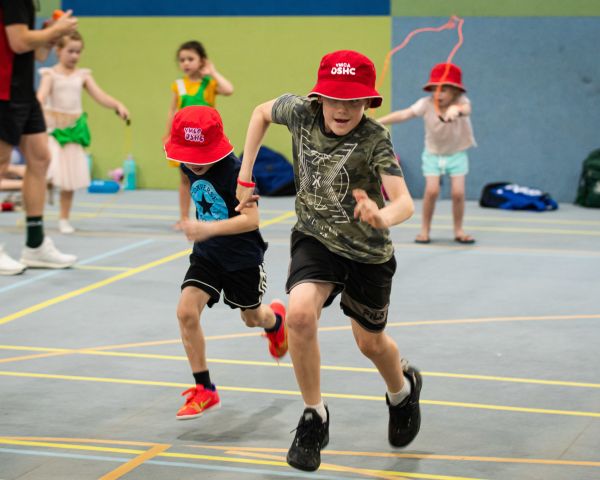THE CHALLENGE
An estimated 125,000 young South Australians aged 5-12 years do not meet the National Physical Activity Guidelines. This represents more than three-quarters of primary school children and, despite research indicating this for some years, there has been little progress.
The reasons for low physical activity participation are many – ranging from a feeling of being too young, intimidation of competitive sport and insufficient family support, to practical barriers such as affordability or lack of transport.
Clearly, a different approach, and innovative new pathways, are required.
Given the variety of such barriers, no one recreational program or activity is sufficient to address all situations and overcome the challenge of fragmentation. A different approach and innovative new pathways that deliver a variety of activities in a manner that is cost-efficient and likely to have high uptake is required.
SOLUTION
YMCA South Australia’s approach to the challenge was to develop a program that would:
- Seamlessly embed greater physical activity into places children are already gathering;
- Gain fresh insights and innovate around the root causes of inactivity;
- Co-design solutions with the children themselves, building literacy as well as activity;
- Develop a variety of options to match the variety of barriers and child interests;
- Make it social, inclusive and fun – so that children are also motivated by their peers;
- Address the barriers to participation (e.g. transport, affordability, time-poverty, etc);
- Inject mentoring and guidance from recreation, education and health professionals;
A partnership between YMCA South Australia (the Y) and the Office for Recreation, Sport and Racing (ORSR) resulted in the successful development and execution of the ‘Act-Iv Kids Challenge’ (shortened from Activity Innovation Kids Challenge).
The concept behind the program was to involve children in the development of the games, rather than prescribing the activity for them. It was hypothesised that by giving children the opportunity to create their own sports, games or activities, they would be more likely be engaged and participate.
The program, which ran in two-hour sessions, consisted of 3 phases:
Phase 1 – Concept understanding
The concept of the program is taught to the children by an activity leader. Quick games that the children participate in, games which children have likely not played before and require minimal equipment or use in non-traditional ways to stoke their imaginations.
Phase 2 – Concept development.
A brainstorming session where participants are split into groups and an activity leader provides game elements for them to develop. These include active movements, equipment and actions using equipment.
Phase 3 – Game creation and participation
Groups are given a small selection of equipment to utilise to create and play their own game. Equipment may vary depending on what is available, but may include items such as bats, balls and skipping ropes, while spaces may include ovals, courts or playgrounds.
RESULTS
During the program, data was gathered from 65 participants at 5 sites using wearable fitness trackers. This showed that the average heart rate of participants (average age 10 years) during periods of physical exertion was defined as ‘vigorous’, falling within 70-90 per cent of the maximum heart rate range (Eckard, Kuwabara & Van Camp, 2019), therefore achieving the program goal.
The formula used to calculate maximum heart rate: Max. HR = 220 – 10 (Age).
On average, participants were involved in 35 minutes of actual physical activity. While this on its own does not meet the recommended 60 minutes activity per day (AIHW, 2018), the idea of the program was to develop habits aimed at the continuation of physical activity outside the program.
The overall findings showed that the program succeeded in engaging children in physical activity and contributed to building positive attitudes, particularly with participants that were less likely to participate in traditional sport and physical activity programs.
Further, anecdotal evidence suggested that children involved in the program were cognitively engaged and, in various instances, have since played a game or games that they developed during the program or developed other games as a result of their exposure to the concept
FORWARD PLAN
The result of positive outcomes from the program will inform the development of a larger scale, long-term program, utilising the existing Act-Iv Kids Challenge concept. Exposing children to many different forms of physical activity will offer them the best opportunity to find what they engage with best. This would be dome by combining four elements:
- Game creation (Act-Iv Kids Challenge)
- Traditional sports programs
- Group fitness style sessions
- Nutrition and healthy eating component
Sessions would run during after-school care time at OSHC services, offering the opportunity to make the program scalable and allow development of active habits over an extended period of time.

